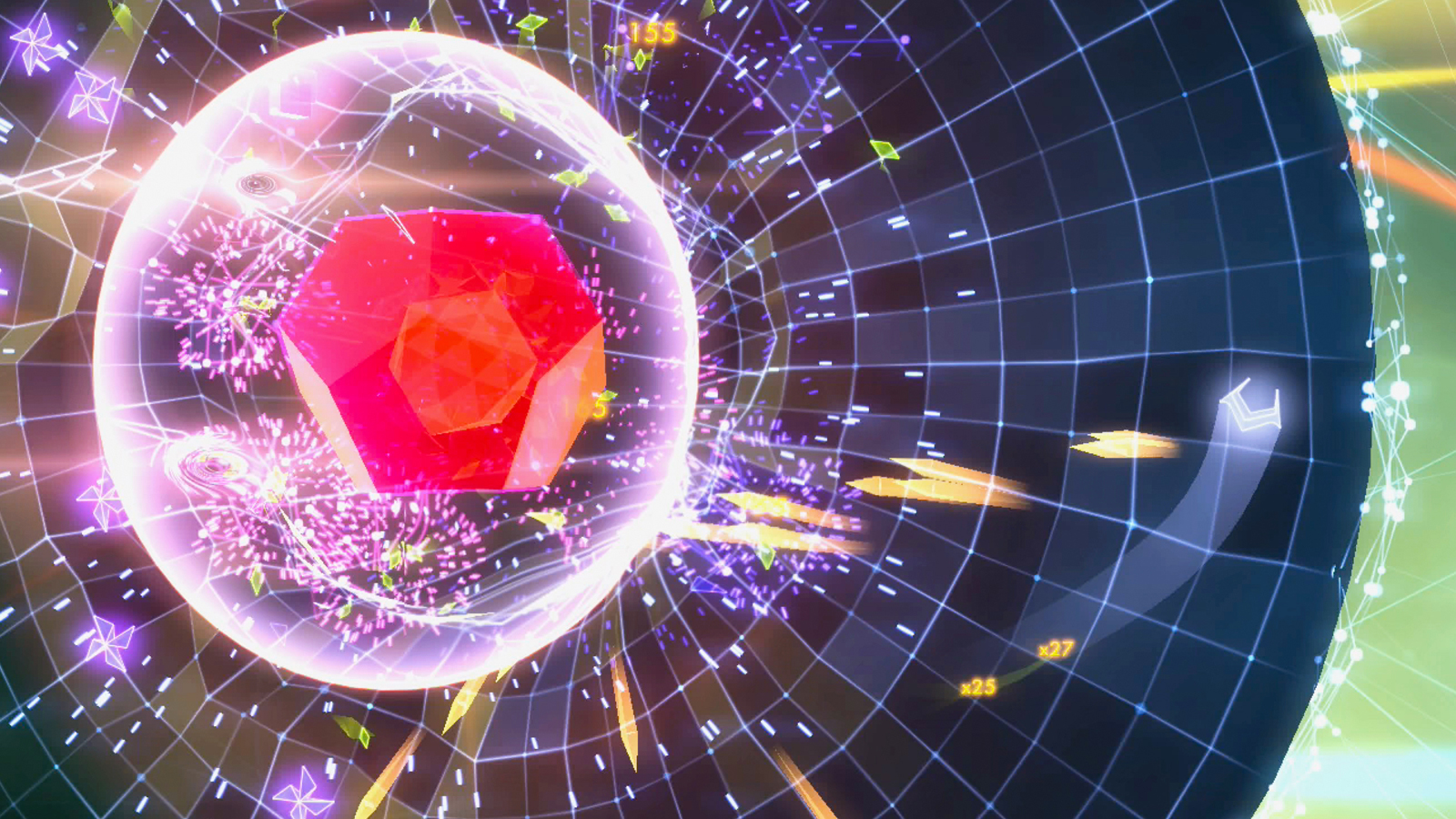GamesRadar+ Verdict
Aesthetically scintillating, but equally enthralling in its immense depth, Geometry Wars 3 is a sequel whose design insight is matched only by its endlessly creative sense of fun. Close to perfect.
Pros
- +
The same stunning gameplay
- +
exploded in dizzying fashion
- +
Ridiculously creative
- +
endlessly surprising level design
- +
Mammoth replay value
- +
with stacks to discover and learn
- +
Exhilarating
- +
captivating audio-visual design
Cons
- -
Online Vs. multiplayer is a bit of a non-event
Why you can trust GamesRadar+
Nothing else in gaming feels like Geometry Wars. Nothing. That shudder of adrenalised anticipation as the level warps in. The heightened alertness as you neatly gun down the first couple of waves, seemingly nonchalant, but senses tightening in readiness. Then the escalation. Gradual at first, but relentless, steady, and utterly merciless. Then The Zone. Not even consciously playing any more, you’re watching yourself do the impossible, ducking and weaving between gaps that barely exist, time simultaneously speeding up and slowing down, as your mind whirls with piano-string tension and euphoric, synaesthesia-washed calm.
But there’s a purity to that gameplay. A precision designed, laser-cut, unsullied correctness fundamental to every component of the experience. Surely evolving that into a more complex, bells-and-whistles, new-gen sequel – particularly one that makes use of that tricky third dimension – is potentially a big fat exercise in self-defeating convolution?
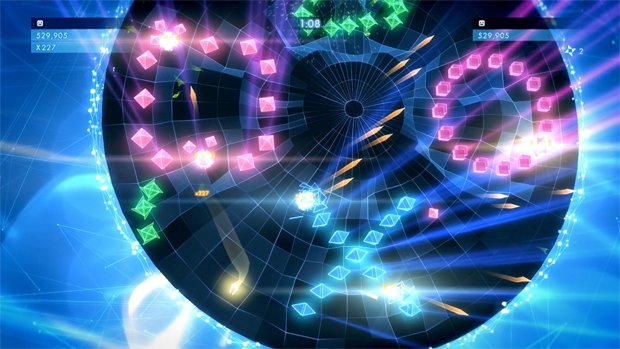
Know this now: Geometry Wars 3 feels as good as Geomtry Wars ever has. In fact it feels much, much better. You see Geometry Wars 3 understands that the solution to the evolution conundrum is not to build dangerous new additions into a previously tight, self-sustaining set of game systems, but to build around them. This is a game about expanding and exploring, not replacing and rebooting. It’s testament and tribute to the strength of those core mechanics, not the dissolution of them.
For starters, Geometry Wars 2 stalwarts need fear nothing. GW3’s Classic mode comprises everything that made its predecessor one of the greatest games of all time. All but one of the original modes are here, polished up to a sleek, new-gen shine and fully equipped – as is everything else – with the same, on-screen, friends-list leaderboard that devastated your sleep patterns the last time round. If you wanted to, you could keep playing this updated GW2 until the apocalypse and beyond, and have just as great a time as you ever have. But if you did that, you would be a goddamned fool. Because Adventure Mode also exists, and it is a very special achievement indeed.
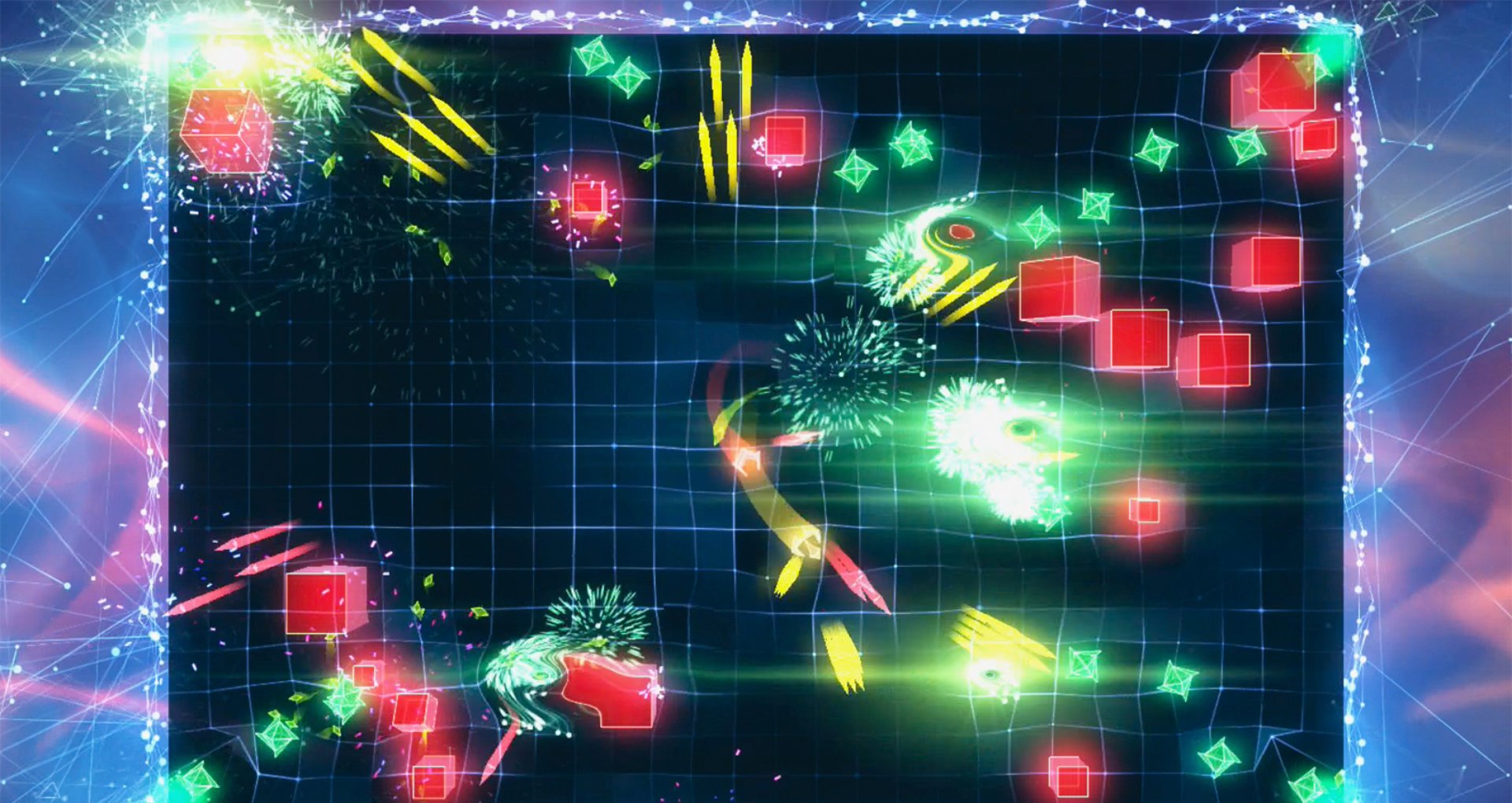
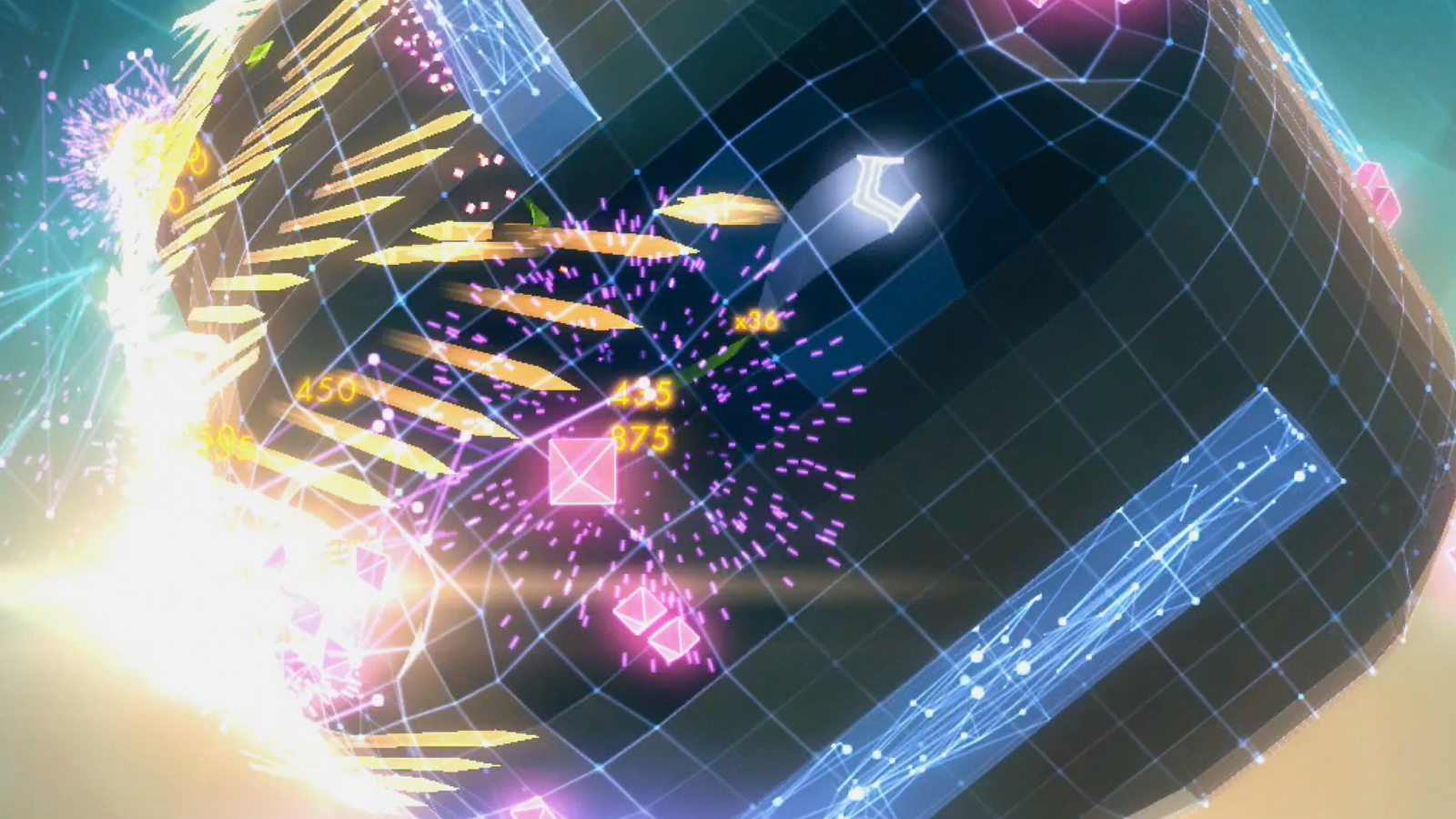
Super States - or power-ups to you and I - are a fantastic new addition. Spawning intermittently as large, pixelly icons, when shot to pieces they bestow everything from death-hose multi-shots, to spread-guns, to mad stuff like a destructive, Tron Lightcycle-style tail. If you miss and crash into them, they'll kill you dead. Use them wisely though, and there are immensely heroic, strategic triumphs to be had.
Comprising the bulk of Dimensions’ content, its 50 levels are a masterclass in creative escalation, reshaping, refocusing, deconstructing and rebuilding GW’s core, twin-stick shooting in a giddy number of new directions. Theoretically it adds a couple of new modes and rule-sets to the mix along the way, but in reality, each and every level is a brand-new way of experiencing the game.
The first thing you’ll notice will of course be the titular dimensions. You might even half-joke to yourself that ‘they’ve done a Mario Galaxy’, on first sight of the game’s boundless, freely roamable arenas. Later you’ll discover that facetious comment to hold a great deal more insight than you thought. Because, just as the plumber’s pioneering Wii debut used gravity and wraparound worlds to provide a new playground of opportunities for tried and true game mechanics, so too does GW3 maintain what Geometry Wars is while wildly exploring what it can be.
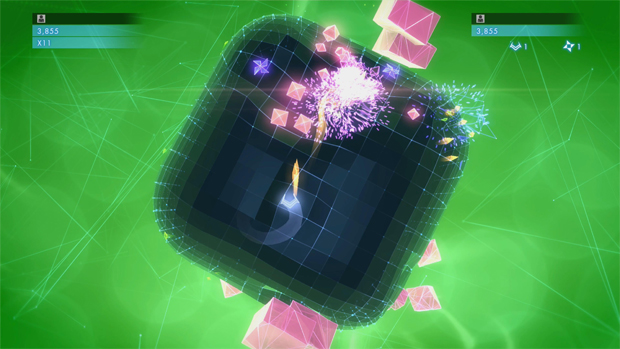
This is precise 2D gameplay exploded to take in boggling, free-wheeling, 3D strategies. You’ll be giddily impressed the first time you fire a stream of shots to the other side of a gleaming, glitterball moon, or spin around on the corner of a cube, showering three sides of it with a rainstorm of glowing gunfire. Not long after, you’ll start to realise the true power and potency of GW’s new set-up.
You’ll find that a boss enemy’s bubble-shield isn’t actually an annoyance, but a strategic, environmental opportunity, its chaotic, 180-degree deflections bathing the grid with cleansing gunfire more effectively than you ever could on your own. You’ll start to discover radically new, deeply satisfying sides to – and interactions with – the series’ traditional enemy AI types. Those always-troublesome rows of orange rockets are terrifying the first time their formation spreads to stretch around a spherical play area, but once you realise that, logically, they have to come back together at the other side? You can dodge, fire a salvo behind yourself at the opportune moment, and know – without even looking - that they’re not coming back around to bother you a second time. It’s an incredible, immensely gratifying feeling. Make no mistake. The spiralling playfulness of GW3’s level design changes everything. Constantly.
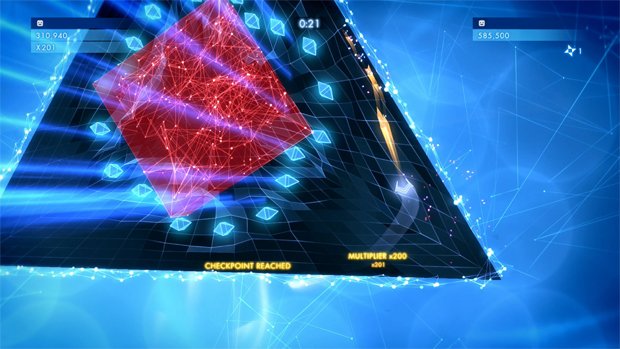
The peaks of domed areas and the corners of cuboids can offer powerful, king-of-the-castle advantages if you can hold them, but are also incredibly high-risk areas due to their reduced visibility of the overall warzone. A simple, circular arena becomes a cat-and-mouse seesaw of control, as two walls rotate around its rim like the blades inside a washing machine. Open space becomes a blind corner. Entrapment becomes escape. That shifting, central choke-point is a constant blessing and curse. And all of this comes as standard. All of it is the most basic level on which Geometry Wars 3 operates. There’s much, much more to come.
I mentioned bosses. They’re a thing. No mere psychedelic bullet-sponges, GW3’s mega-mooks are - in the majority - intricate, arcane, multi-stage puzzle-boxes of intense, problem-solving combat. Some will try to distract you with unfathomably dense waves of enemies and morphing, obstructive level architecture. Others will warp into unannounced proxy-bodies on different hemispheres of the arena - sometimes several at a time - forcing frantic seek-and-destroy tactics while juggling the omnipresent normals. Appearing every 10 levels, not every boss is a high point, but at their best they present some of the most intense, exhilarating, conceptually and aesthetically stunning gameplay you’ll experience this year.
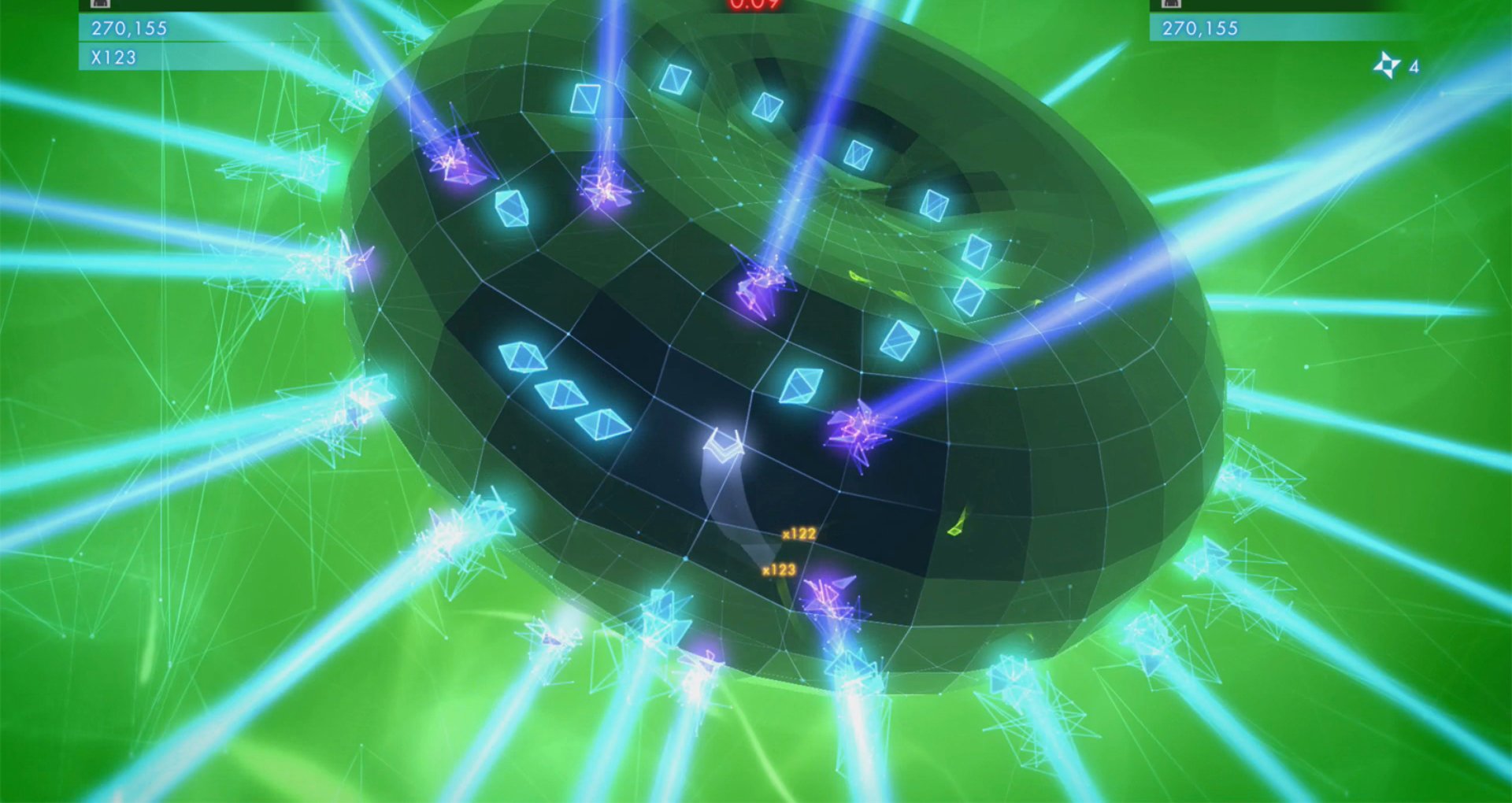
And then there are the drones. Appearing a few levels in, and unlocking progressively alongside campaign progress, these little robot buddies augment your ship with additional abilities, one passive, one activated manually, once per round. The first increases firepower. Another hoovers up the geoms that feed your score multipliers. Homing missiles act as a great alternative to the smart bomb, cleaning the screen less efficiently, but preserving the points scored for enemies downed. One drone even lays a minefield. Sounds odd, but in certain levels, that temporary ‘safe-zone’ can be a game-changer. And in timed challenges set in tight, twisting arenas, it can clear a wave single-handed.
All of this, again, refocuses the gameplay, this time by your own design. Although certain drones are always useful, the ‘best’ load-out remains situational, based on the unique tasks and challenges at hand. Some might argue that custom gear reduces the purity of the score-chasing experience - particularly between friends - but at the same time it adds an extra degree of meta-challenge, as you puzzle upon the optimum set-up for each level once you’ve become intimately familiar with its quirks. In a way, it actually increases competition rather than reducing it.
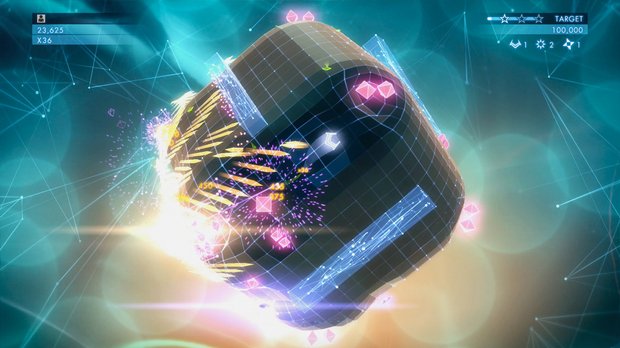
Downsides? In a game this focused, this knowing of its core gameplay and values, there are few. The addition of online multiplayer - taking in two different, team-based modes focused around competitive score-attack – adds little, lacking the purity of the main game and, at the time of writing, the player-count for anarchic fun. And in the main game - as has always been the case - bad luck can on occasion screw you over. Exacerbated slightly by the structured appearance of tide-turning, temporary power-ups (with limited availability), getting caught in the wrong place at the wrong time on the wrong side of a planetoid can spell disaster for those not hardy enough to battle on through.
But what’s a loss in Geometry Wars anyway? By the time you start to explore the greater depths of weapon strategy, you’ll be so far down the instant-restart rabbit hole that you’ll have forgotten the defeat the instant you’re back blasting. And you will be. Over, and over and over again, until you haven’t slept for days, and you’re getting closed-eye hallucinations with your eyes open. I’m not even joking about that last one. It’s actually been happening to me. A lot. And I welcome more of it.
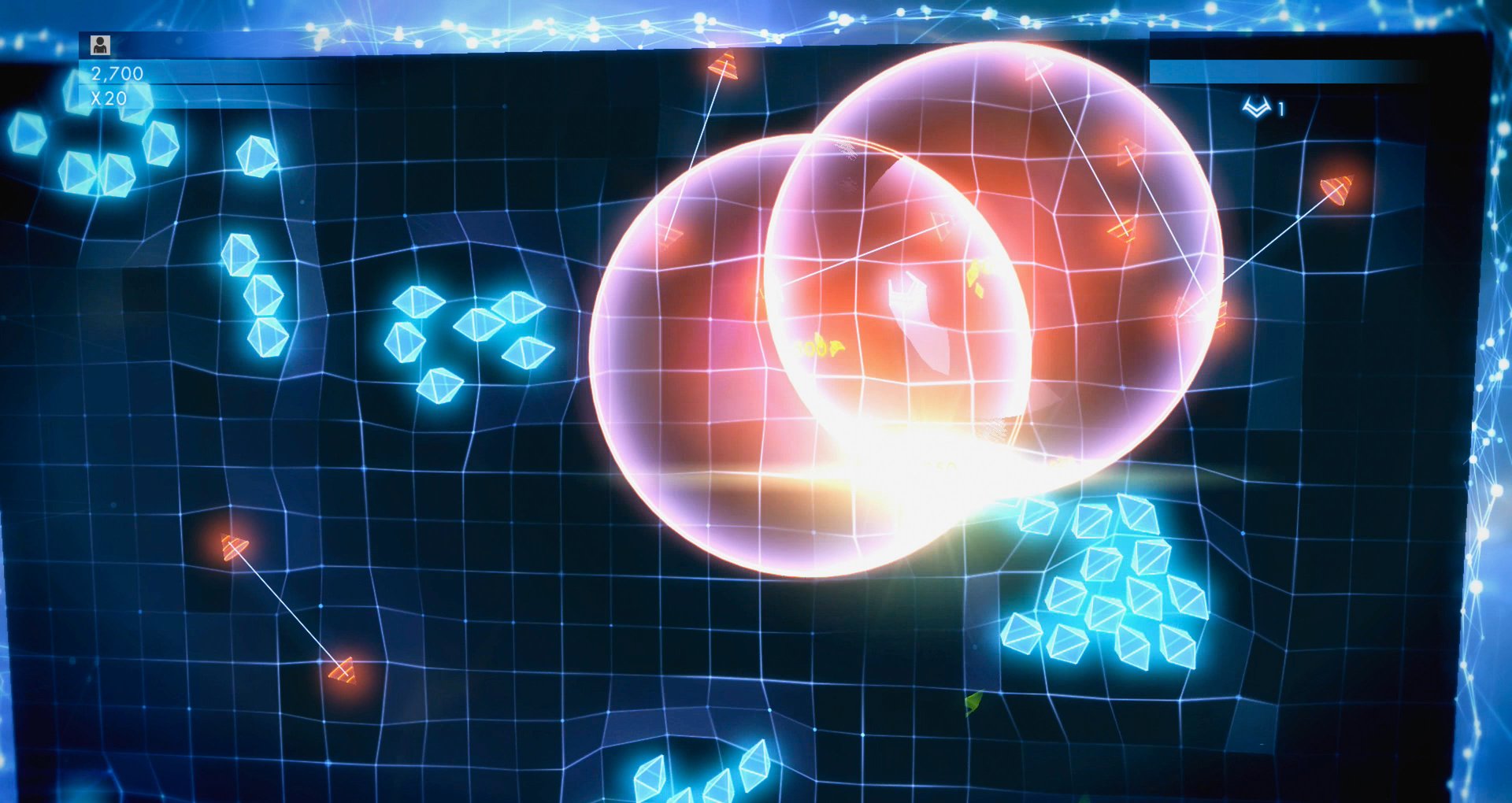
This game was reviewed on PS4.
More info
| Genre | Arcade |
| Description | Engage yourself once more in the battle for survival, armed with your energy blaster and bombs. |
| Franchise name | Geometry Wars |
| Platform | "Xbox One","Xbox 360","PS3","PS4","PC" |
| US censor rating | "Everyone","Everyone","Everyone","Everyone","Everyone" |
| UK censor rating | "","","","","" |
| Release date | 1 January 1970 (US), 1 January 1970 (UK) |
